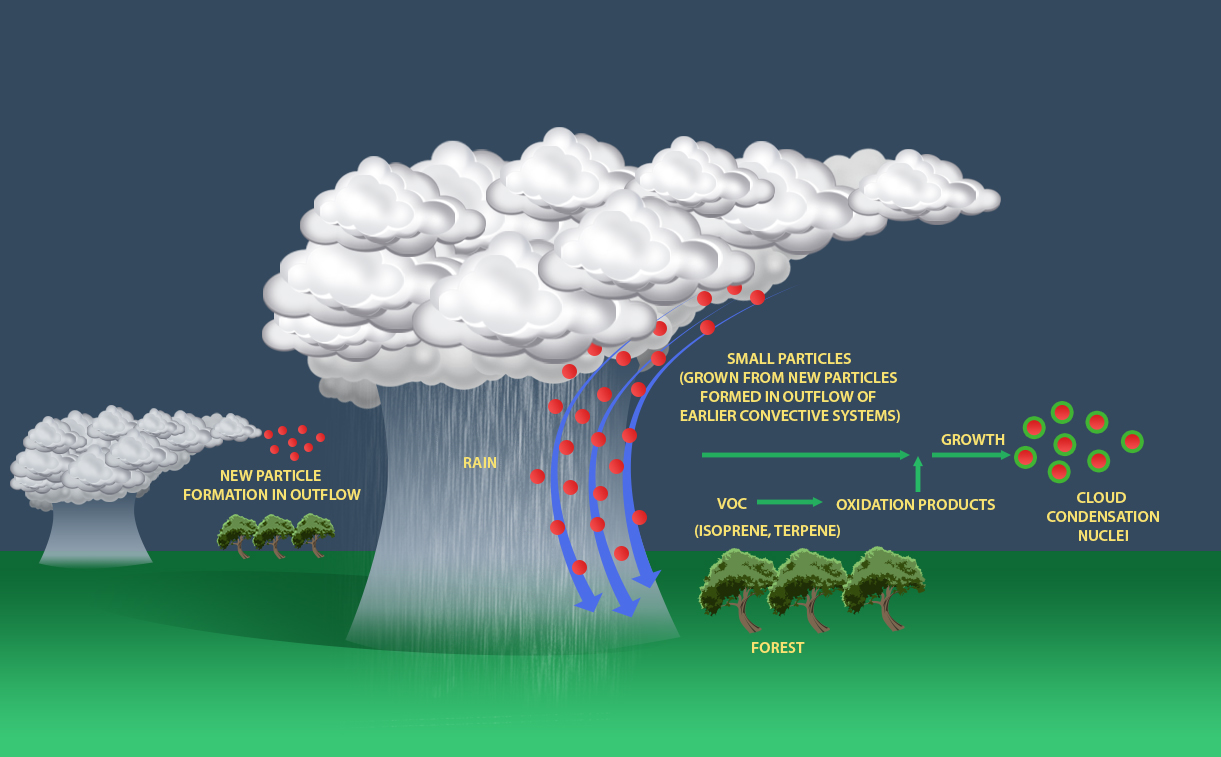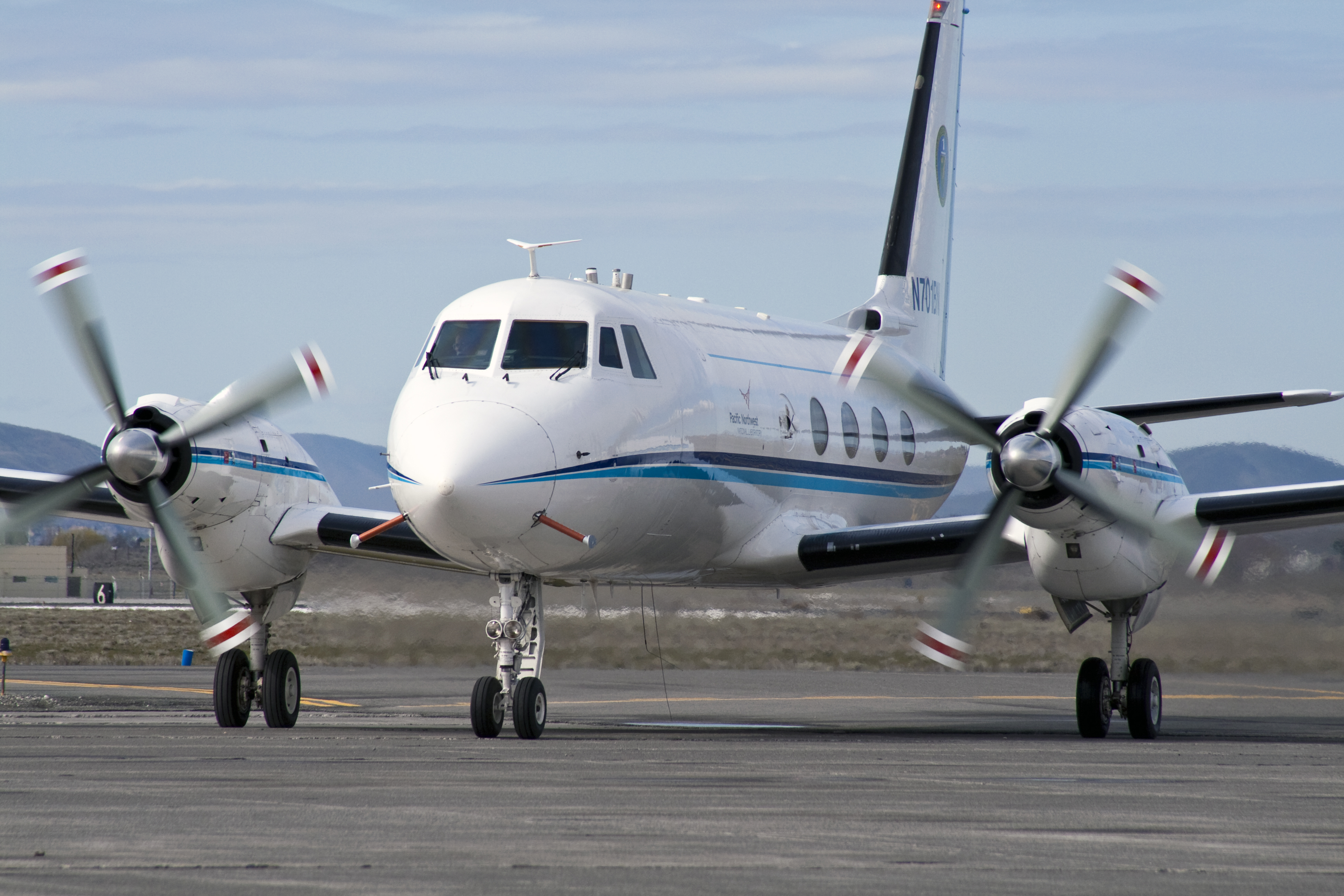
Understanding how tiny particles emitted by cars and factories affect Earth’s climate requires accurate climate modeling. Scientists also need to quantify the effects of these pollutant particles compared to particles naturally present in the atmosphere. One large uncertainty remains: What Earth was like before industrial-era emissions began?
In a paper published today in Nature, scientists in the GoAmazon study—Observations and Modeling of the Green Ocean Amazon—describe how tracking particles in the largely pristine atmosphere over the Amazon rainforest has given them a way to effectively turn back the clock a few hundred years.
The scientists, sponsored in part by the U.S. Department of Energy’s (DOE) Atmospheric System Research (ASR) Program, collected data over the Amazon during 2014-2015.
The analysis described in the Nature paper, led by scientists from DOE’s Brookhaven National Laboratory (BNL), reveals that in the skies above the Amazon large numbers of small aerosol particles form naturally in the upper atmosphere. They are carried to the lower atmosphere by rapid downdrafts associated with rainfall. In this “boundary layer” volatile organic compounds emitted by trees create oxidation products that condense on the small particles, making them the “nuclei” around which clouds form.

“But in the Amazon, there are clean conditions—no cars, no factories—which means we can study this pristine environment to see what Earth was like before the industrial era in order to quantify what the change is. Our measurements will improve how these key atmospheric processes are represented in climate models.”
In the absence of the industrial sources, and with all the rain, where are the small particles in the Amazon boundary layer coming from? The GoAmazon scientists hypothesized that the particles might be coming from higher up in the atmosphere, where cold temperatures make it much easier for vapor molecules to condense and form tiny particles. Then they are carried down into the boundary layer by rainfall.
Using a DOE Atmospheric Radiation Measurement (ARM) Climate Research Facility research aircraft, scientists measured the numbers and sizes of particles at various altitudes above a pristine region of the Amazon rain forest. From ground instruments, they monitored how the particles at ground level changed after rainfall, and measured how air masses move as a storm passes by.
Detailed statistical analyses confirmed that rapid, sporadic downdrafts associated with precipitation carried sufficient numbers of small particles from the lower free troposphere to the boundary layer to create a fresh population of the particles that would eventually seed the formation of new clouds.
The implications, said Wang, may go beyond the tropics to reveal likely pre-industrial conditions over many continental sites. “We now have measurements we can use as a baseline that will help us understand the effects of industrialization.”
For more information:
- Brookhaven press release: Amazon Study Reveals that Rainstorms Transport Atmospheric Particles Essential for Cloud Formation
- GoAmazon Website
# # #
This work was supported by the U.S Department of Energy’s Office of Science, Office of Biological and Environmental Research as part of the Atmospheric System Research Program.
The GoAmazon field campaign was led in the United States by Harvard University and in Brazil by a consortium of Brazilian and German research groups. Scientists from Finland and Sweden also participated. The ARM Climate Research Facility is a DOE Office of Science User Facility.

